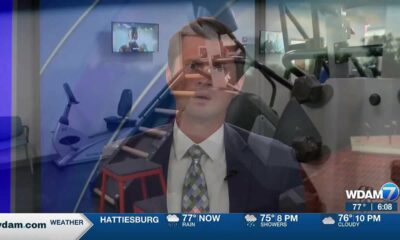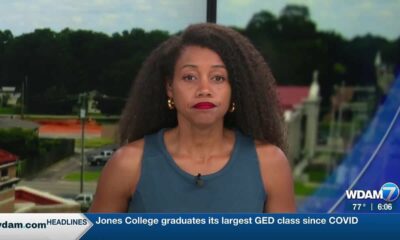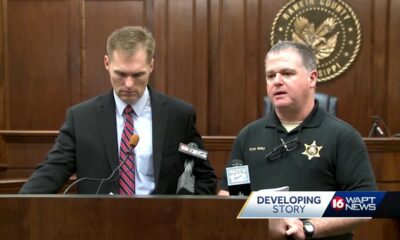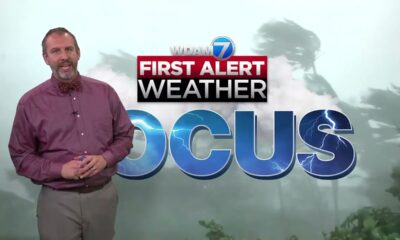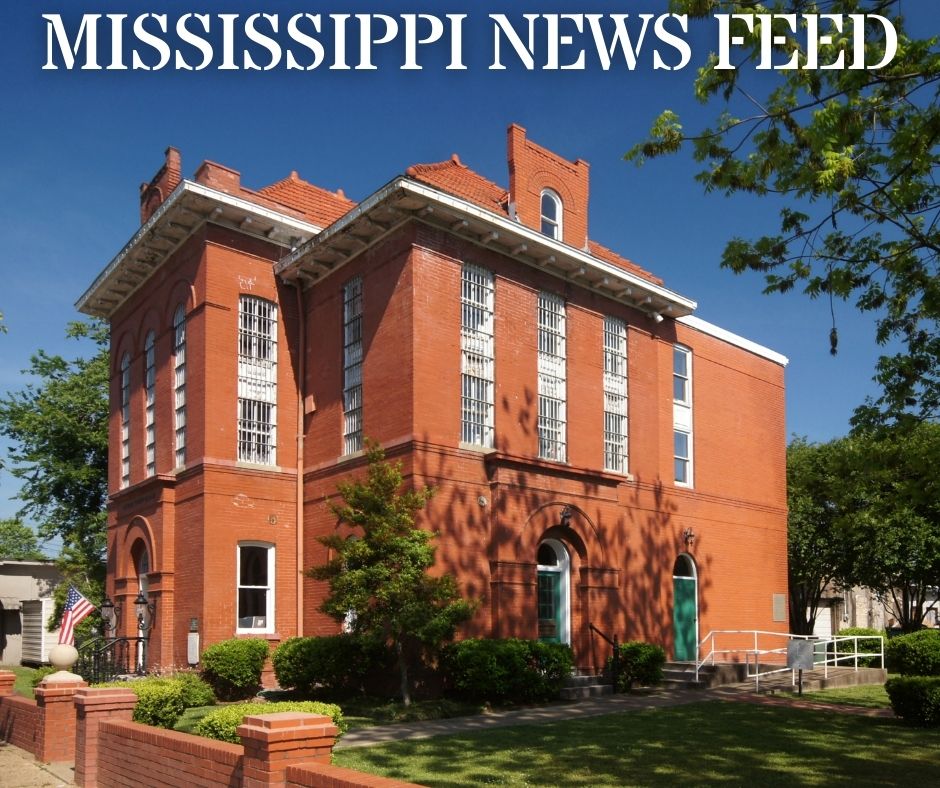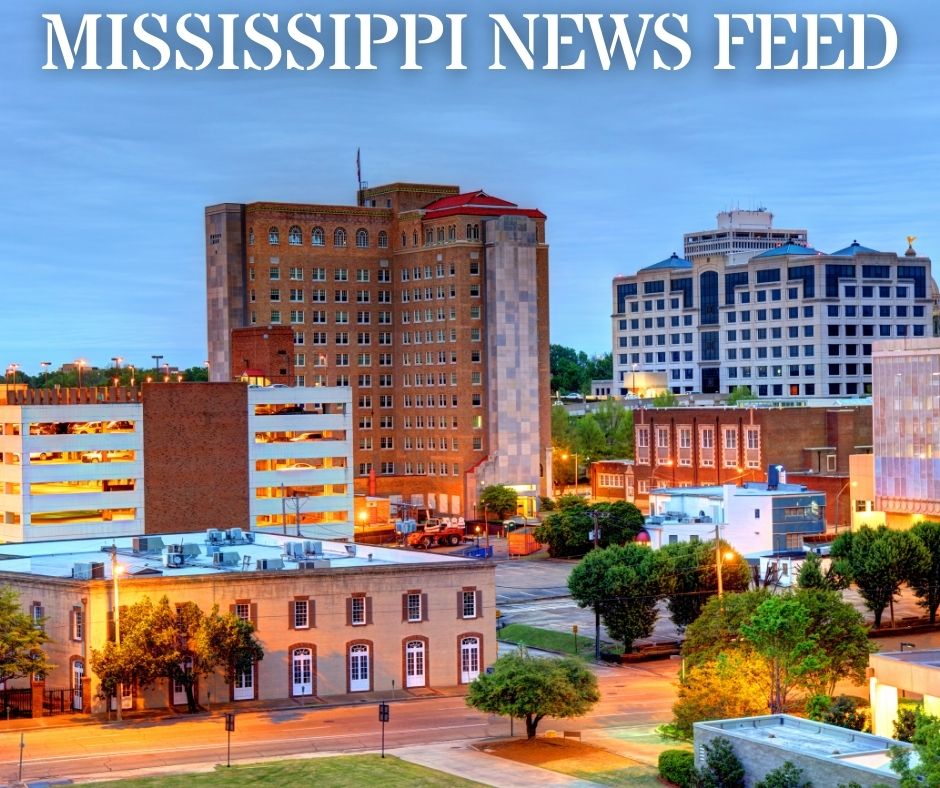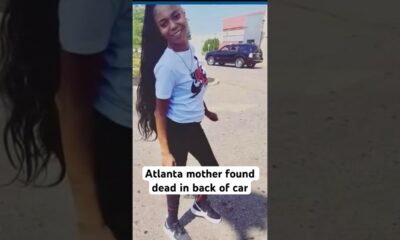Kaiser Health News
California Takes Up White House Call to Toughen Gun Storage Rules
Samantha Young
Thu, 29 Feb 2024 10:00:00 +0000
SACRAMENTO, Calif. — California lawmakers are weighing a pitch from the White House for states to toughen gun storage rules as legislation languishes in Congress.
Even though many states, including California, have laws in place for safely storing guns when children are present, the Biden administration wants them to go further by requiring gun owners to secure firearms most of the time.
California's Senate passed a sweeping bill in January that would adopt the White House recommendation. State Sen. Anthony Portantino, the author of SB 53, said the idea is to make it harder for anybody, not just children, to find and use a gun to commit crime or kill or accidentally harm themselves. Portantino spoke about his bill for a White House event in January.
But critics argue the proposal would violate the constitutional right to bear arms by making firearms difficult to access in potentially life-threatening situations, such as home break-ins. The measure is likely to face legal challenges should it clear the remaining legislative hurdles.
“This is a recognition that guns kill people, and the readily available unlocked guns kill more people,” the Democrat from Burbank told his colleagues during debate on the Senate floor. “The best way to make it safer for our children to go to school, and for people in households where there's trauma, is to make sure the weapons don't fall into the wrong hands. And the way to do that is to lock them up.”
In 2021, about 30 million American children lived in homes with firearms, including 4.6 million in households with loaded and unlocked firearms, according to a national firearms survey.
The Department of Justice in December unveiled model gun storage legislation for states to consider. “It's a simple step that can save lives,” said Stefanie Feldman, director of the White House Office of Gun Violence Prevention.
Since then, lawmakers in Arizona, Illinois, Kentucky, Minnesota, New Jersey, and Utah have also introduced similar measures, but none of the bills have yet received a committee hearing. In South Dakota, the Republican-controlled legislature killed similar legislation in February, for the second time in two years. Oregon and Massachusetts already have implemented comparable regulations.
The model legislation is part of a multipronged strategy by Democratic President Joe Biden's administration to encourage states to take the lead on gun safety as legislation has stalled in Congress, including bills to enact universal background checks and ban the sale and possession of assault weapons.
Legislation that would create the first federal gun storage mandate, which was introduced in January 2023, has yet to get a hearing in the GOP-controlled House of Representatives.
Gun-related legislation has increasingly become victim to partisan politics as Republicans have embraced a gun rights agenda to shore up political support, said Robert Spitzer, a professor emeritus of political science at the State University of New York-Cortland who has written books on American gun policy.
“The states have always been referred to as the laboratories of democracy,” Spitzer said. “It's a place where laws are often enacted when you can't get things done at the national level.”
California's existing gun storage law requires guns, whether they're loaded or unloaded, be secured using a method such as a gun safe or trigger lock in places where they could get into the hands of a minor, a felon, or anyone prohibited from possessing a firearm. Portantino, who introduced the existing law in 2019, is also a candidate in a hotly contested congressional race.
The bill moving through the state's Democratic-controlled legislature would extend gun storage rules to all residences, a mandate similar to the Biden administration's proposal, and require owners to secure firearms in a lockbox or safe. The White House proposal gives gun owners the option of using a trigger lock — a lock that fits over a gun's trigger mechanism that prevents the gun from being fired — instead of a lockbox or safe.
California Gov. Gavin Newsom, a Democrat who has signed a number of gun control laws, declined, through a spokesperson, to comment on the measure.
But keeping a gun in a locked box or making it unusable with a trigger lock, which requires a key or combination, could be problematic, critics say. In communities struggling with violent crime, a disabled gun would be useless for self-defense, said California state Sen. Kelly Seyarto, a Republican from Murrieta.
“You don't have time when somebody breaks into your house to fiddle with the lock and the storage and get your gun out,” Seyarto said on the Senate floor. “Because by then you will be dead.”
Seyarto and the National Rifle Association say the California bill is excessive and that, because gun owners might be unable to defend themselves, it would infringe on Second Amendment rights.
“This bill's one-size-fits-all approach fails to consider individual circumstances and imposes undue burdens,” said Daniel Reid, managing director of state and local affairs for the NRA's Institute for Legislative Action. “We support empowering individuals to make responsible choices, rather than eroding their freedoms with typical California-style gun control.”
Firearms were the leading cause of death for children ages 1-17 in 2020, 2021, and 2022, according to analyses of CDC data by KFF. In 2022, an average of seven children a day died from getting shot.
The number of children “lost to gun violence, to shooting, is unfathomable,” said first lady Jill Biden at a White House event in January. She called on school principals to communicate with parents about safe gun storage. The Department of Education also crafted a letter schools can send to parents explaining that safely storing firearms “can help prevent them from getting into the hands of children and teens, who may use them to, intentionally or unintentionally, harm themselves or others.”
Roughly three-quarters of school shooters in 25 incidents from 2008 to 2017 acquired their firearms from the home of a parent or close relative, according to the Secret Service.
On Feb. 6, a jury in Michigan convicted Jennifer Crumbley of involuntary manslaughter in the killings of four high school students in 2021 because her son, the shooter, used a gun and ammunition she had failed to secure in their home. In December, Deja Taylor, the mom of a 6-year-old boy who shot his first grade teacher in a Virginia classroom with her gun, was sentenced to two years in prison after pleading guilty to child neglect.
At least 82 bills before state legislatures address gun storage, with varying requirements, said Lindsay Nichols, a policy director at Giffords, which advocates for stricter gun laws and was founded by former U.S. Rep. Gabrielle Giffords (D-Ariz.), who was shot in the head at a constituent event in Tucson in 2011. Six people died in the shooting. The bills' prospects often depend on which party controls the state legislature. That's what happened in South Dakota in mid-February, said Democratic state Rep. Linda Duba, whose measure died in committee.
“If you're from a red state, it's almost virtually impossible to get anything passed,” said Duba, who attended a White House meeting on gun safety in December.
If California's bill becomes law, legal experts say, it will be challenged in court. Two years ago, the U.S. Supreme Court struck down a long-standing concealed carry law in New York, issuing a landmark ruling that firearm laws must be consistent with the nation's “historical tradition” of firearm regulation.
Since then, federal district judges have struck down California laws that ban people from carrying concealed guns in many public places and require a background check for ammunition purchases. Appeals court judges later overturned those rulings, allowing the laws to take effect while the legal wrangling proceeds.
“Second Amendment law is profoundly unsettled right now,” said Adam Winkler, a UCLA law professor who specializes in constitutional law. “And courts can't seem to agree on which gun laws are constitutional and which aren't.”
This article was produced by KFF Health News, which publishes California Healthline, an editorially independent service of the California Health Care Foundation.
——————————
By: Samantha Young
Title: California Takes Up White House Call to Toughen Gun Storage Rules
Sourced From: kffhealthnews.org/news/article/california-states-legislation-gun-storage-lockbox-child-safety/
Published Date: Thu, 29 Feb 2024 10:00:00 +0000
Kaiser Health News
Union With Labor Dispute of Its Own Threatens to Cut Off Workers’ Health Benefits
Phil Galewitz, KFF Health News
Fri, 26 Jul 2024 09:00:00 +0000
The National Education Association, the nation's largest union, is threatening to cut off health insurance to about 300 Washington, D.C.-based workers on Aug. 1 in an effort to end a bitter contract dispute.
It's a tactic some private employers have used as leverage against unionized workers that has drawn scrutiny from congressional Democrats and is prohibited for state employers in California. Experts on labor law say they've never seen a union make the move against its own workers.
“This is like a man-bites-dog situation where the union is now in a position as the employer,” said Paul Clark, a professor of labor and employment relations at Penn State University. “It's not a good look for a union.”
NEA workers with pressing health needs are worried but say they won't fold. Joye Mercer Barksdale, a writer on the NEA's government relations team, said she needs coverage for a medical procedure to address atrial fibrillation, a cardiac disorder. “This is insane for the NEA to use our health benefits as a bargaining chip,” she said.
But Barksdale said the threat isn't enough to force her to agree to an unacceptable contract. “I am not ready to give in,” she said.
The NEA Staff Organization, the union representing workers at the NEA's headquarters, launched a strike on July 5 in Philadelphia, during the union's annual delegate assembly. It was its second walkout this summer as the two parties negotiate a new contract, navigating sticking points such as wages and remote work.
In response, the NEA ended the conference early. President Joe Biden was supposed to speak at the event but withdrew, refusing to cross the picket line. The NEA on July 24 endorsed Kamala Harris for president.
On July 8, the day after the conference had been scheduled to end, the NEA locked out workers. In a letter the day before, the NEA informed its unionized workers that they would not be paid, effective immediately, and their health benefits would expire at the end of July unless a new deal were reached.
“NEA cannot allow NEASO to act again in a way that will bring such lasting harm to our members and our organization,” Kim Anderson, the NEA's executive director, wrote in the letter, obtained by KFF Health News. “We are, and have always been, committed both to our union values and to the importance of conducting ourselves as a model employer.”
Democrats in Congress, including Sens. Sherrod Brown of Ohio and Bob Casey of Pennsylvania, introduced legislation last year to protect striking workers from losing their health benefits, after several large companies, including General Motors, John Deere, RTX (formerly Raytheon Technologies), and the maker of Kellogg's cereals, threatened to or did cut off coverage during labor disputes.
“Workers shouldn't have to choose between their family's health and a fair contract,” Brown said in a statement to KFF Health News.
The legislation was endorsed by large labor unions including the Service Employees International Union and United Steelworkers, according to a press release from Brown's office. The NEA wasn't among them.
“This tactic is immoral, and it should be illegal,” United Steelworkers' president at the time, Thomas Conway, said in the release.
Officials at the NEA, which represents teachers and other administrators, declined an interview request. In a statement, the organization's president, Becky Pringle, said “we are making every effort to reach an agreement as quickly as possible” with its staff union.
“As union leaders who have been on strike, we recognize the significance and impact of these important decisions on a personal and family level. We truly value our employees and look forward to continued collaboration with NEASO to develop a new contract that benefits us all,” she said.
Kate Hilts, a digital strategist who works for the NEA, said she fears losing her coverage will leave her unable to afford treatment for a rare autoimmune disease that attacks her kidneys. Her next treatment was slated for August.
“I wake up every day and can't believe this is happening,” she said. “You would expect this from an employer that is antiworker or has a terrible labor record, but I am totally flabbergasted that a labor union would do this that bills itself as pro-worker, pro-family, pro-education, and pro-children.”
The NEA staff union has filed multiple charges with the National Labor Relations Board this year, including allegations that the NEA withheld holiday overtime pay and failed to provide information on the outsourcing of millions of dollars in bargaining unit work.
California is one of the only states that protect striking workers from losing health coverage. The state legislature passed a law in 2021 that blocks the tactic from being used against public employees and another law in 2022 that allows any striking workers who lose their insurance to immediately get heavily discounted coverage through the state's Affordable Care Act marketplace.
If they remain locked out, the NEA workers would be eligible for coverage under COBRA, a federal program that allows people who are fired or laid off to maintain their employer-sponsored insurance for 18 months.
But the coverage can be a financial hardship, as individuals often must pay the entire cost of their insurance premiums, plus a 2% administrative fee.
Another option for workers would be coverage through the Affordable Care Act marketplace, though that also could be costly. And it may be unclear how soon that coverage would begin or whether insurers would cover their existing doctors.
“I'm hoping the NEA will be so ashamed of what they are doing that, at the very least, they will not take away our health benefits,” Barksdale said.
——————————
By: Phil Galewitz, KFF Health News
Title: Union With Labor Dispute of Its Own Threatens to Cut Off Workers' Health Benefits
Sourced From: kffhealthnews.org/news/article/nea-national-education-association-union-threatens-health-insurance-benefit-lockout/
Published Date: Fri, 26 Jul 2024 09:00:00 +0000
Did you miss our previous article…
https://www.biloxinewsevents.com/the-cdcs-test-for-bird-flu-works-but-it-has-issues/
Kaiser Health News
The CDC’s Test for Bird Flu Works, but It Has Issues
Arthur Allen and Amy Maxmen
Fri, 26 Jul 2024 09:00:00 +0000
The Centers for Disease Control and Prevention says a glitch in its bird flu test hasn't harmed the agency's outbreak response. But it has ignited scrutiny of its go-it-alone approach in testing for emerging pathogens.
The agency has quietly worked since April to resolve a nagging issue with the test it developed, even as the virus swept through dairy farms and chicken houses across the country and infected at least 13 farmworkers this year.
At a congressional hearing July 23, Rep. Brett Guthrie (R-Ky.) asked about the issue. “Boy, that rings of 2020,” he said, referring to when the nation was caught off guard by the covid-19 pandemic, in part because of dysfunctional tests made by the CDC. Demetre Daskalakis, director of the CDC's National Center for Immunization and Respiratory Diseases, responded that the agency rapidly developed a workaround that makes its bird flu test reliable.
“The tests are 100% usable,” he later told KFF Health News, adding that the FDA studied the tests and came to the same conclusion. The imperfect tests, which have a faulty element that sometimes requires testing a sample again, will be replaced soon. He added, “We have made sure that we're offering a high-quality product.”
Still, some researchers were unnerved by the news coming four months after the government declared a worrisome bird flu outbreak among cattle. The CDC's test is the only one available for clinical use. Some researchers say its flaws, though manageable, underscore the risk of relying on a single entity for testing.
The problem came to light in April as the agency prepared to distribute its test to about 100 public health labs around the country. CDC officials detected the issue through a quality control system put in place after the covid test catastrophe of 2020.
Daskalakis said the CDC's original test design was fine, but a flaw emerged when a company contracted by the agency manufactured the tests in bulk. In these tests, one of two components that recognize proteins called H5 in the H5N1 bird flu virus was unreliable, eliminating an important safeguard. By targeting the same protein twice, tests have a built-in backup in case one part fails.
The agency developed a fix to ensure a reliable result: If only one of the two parts detected H5, the test was considered inconclusive and would be run again. With the FDA's blessing, the CDC distributed the tests — with workaround instructions — to public health labs.
Kelly Wroblewski, director of infectious diseases at the Association of Public Health Laboratories, said the results of the tests have not been ambiguous, and there is no need to discard the tests.
Still, the agency has asked a different manufacturer to remake the faulty component so that 1.2 million improved tests will be available soon, Daskalakis said. Some of the updated tests are already in stock at the CDC, but the FDA hasn't yet signed off on their use. Daskalakis declined to name the manufacturers.
Meanwhile, the outbreak has grown. Farmworkers continue to lack information about the virus and gear to protect them from it. Rural clinics may miss cases if they don't catch a person's connection to a farm and notify health officials rather than their usual diagnostic testing laboratories.
Those clinical labs remain unauthorized to test for the bird flu. Several of those labs have spent months working through analyses and red tape so that they can run the CDC's tests. As part of the licensing process, the CDC alerted them to the workaround with the current test, too.
But outside select circles, the news was largely overlooked. “I'm totally surprised by this,” Alex Greninger, assistant director of the University of Washington Clinical Virology Laboratory, told KFF Health News this week. Greninger's lab is developing its own test and has been trying to obtain CDC test kits to evaluate.
“It's not a red alarm,” he said, but he's worried that as the CDC and the FDA spend months developing and evaluating an updated test, the only one available relies on a single component. If the genetic code underlying that fragment of the H5 protein mutates, the test could give false results.
It's not uncommon for academic and commercial diagnostic labs to make mistakes and catch them during quality control checks, as the CDC did. Still, this isn't the agency's first mishap. In 2016, well before the covid debacle, CDC officials for months directed public health labs to use a Zika test that failed about a third of the time.
The CDC caught and worked to remediate the situation far more quickly and effectively in this case. Nonetheless, the mishap raises concern. Michael Mina, chief science officer of the telemedicine company eMed.com, said diagnostic companies may be better suited to the task.
“It's a reminder that CDC is not a robust manufacturer of tests” and lacks the resources that industry can marshal for their production, Mina said. “We do not ask CDC to make vaccines and pharmaceuticals, and we do not ask the Pentagon to manufacture missiles.”
The CDC has licensed its updated test design to at least seven clinical diagnostic labs. Such labs are the foundation of testing in the U.S. But none have FDA clearance to use them.
Diagnostic labs are developing their own tests, too. But that has been slow-going. One reason is the lack of guaranteed sales. Another is regulatory uncertainty. Recent FDA guidance could make it harder for nongovernmental laboratories to issue new tests in the early phase of pandemics, said Susan Van Meter, president of the American Clinical Laboratory Association, in a July 1 letter to the FDA.
Transparency is also critical, scientists said. Benjamin Pinsky, medical director of the clinical virology laboratory at Stanford University, said as a public agency the CDC should make its protocol — its recipe for making the test — easily accessible online.
The World Health Organization does so for its bird flu tests, and with that information in hand, Pinsky's lab has developed an H5 bird flu test suited to the strain circulating this year in the U.S. The lab published its approach this month but doesn't have FDA authorization for its broad use.
The CDC's test recipe is available in a published patent, Daskalakis said.
“We have made sure that tests are out there, and that they work,” he added.
As the CDC came under fire at the July 23 congressional hearing, Daniel Jernigan, director of the CDC's National Center for Emerging and Zoonotic Infectious Diseases, noted that testing is just one tool. The agency needs money for another promising area — looking for the virus in wastewater. Its current program uses supplemental funds, he said: “It is not in the current budget and will go away without additional funding.”
——————————
By: Arthur Allen and Amy Maxmen
Title: The CDC's Test for Bird Flu Works, but It Has Issues
Sourced From: kffhealthnews.org/news/article/bird-flu-test-cdc-flaws/
Published Date: Fri, 26 Jul 2024 09:00:00 +0000
Kaiser Health News
KFF Health News’ ‘What the Health?’: Harris in the Spotlight
Thu, 25 Jul 2024 18:45:00 +0000
The Host
Julie Rovner
KFF Health News
Julie Rovner is chief Washington correspondent and host of KFF Health News' weekly health policy news podcast, “What the Health?” A noted expert on health policy issues, Julie is the author of the critically praised reference book “Health Care Politics and Policy A to Z,” now in its third edition.
As Vice President Kamala Harris appears poised to become the Democratic Party's presidential nominee, health policy in general and reproductive health issues in particular are likely to have a higher profile. Harris has long been the Biden administration's point person on abortion rights and reproductive health and was active on other health issues while serving as California's attorney general.
Meanwhile, Congress is back for a brief session between presidential conventions, but efforts in the GOP-led House to pass the annual spending bills, due by Oct. 1, have run into the usual roadblocks over abortion-related issues.
This week's panelists are Julie Rovner of KFF Health News, Stephanie Armour of KFF Health News, Rachel Cohrs Zhang of Stat, and Alice Miranda Ollstein of Politico.
Panelists
Stephanie Armour
KFF Health News
Rachel Cohrs Zhang
Stat News
Alice Miranda Ollstein
Politico
Among the takeaways from this week's episode:
- President Joe Biden's decision to drop out of the presidential race has turned attention to his likely successor on the Democratic ticket, Vice President Kamala Harris. At this late hour in the campaign, she is expected to adopt Biden's health policies, though many anticipate she'll take a firmer stance on restoring Roe v. Wade. And while abortion rights supporters are enthusiastic about Harris' candidacy, opponents are eager to frame her views as extreme.
- As he transitions from incumbent candidate to outgoing president, Biden is working to frame his legacy, including on health policy. The president has expressed pride that his signature domestic achievement, the Inflation Reduction Act, took on the pharmaceutical industry, including by forcing the makers of the most expensive drugs into negotiations with Medicare. Yet, as with the Affordable Care Act's delayed implementation and results, most Americans have yet to see the IRA's potential effect on drug prices.
- Lawmakers continue to be hung up on federal government spending, leaving appropriations work undone as they prepare to leave for summer recess. Fights over abortion are, once again, gumming up the works.
- In abortion news, Iowa's six-week limit is scheduled to take effect next week, causing rippling problems of abortion access throughout the region. In Louisiana, which added the two drugs used in medication abortions to its list of controlled substances, doctors are having difficulty using the pills for other indications. And doctors who oppose abortion are pushing higher-risk procedures, like cesarean sections, in lieu of pregnancy termination when the mother's life is in danger — as states with strict bans, like Texas and Louisiana, are reporting a rise in the use of surgeries, including hysterectomies, to end pregnancies.
- The Government Accountability Office reports that many states incorrectly removed hundreds of thousands of eligible people from the Medicaid rolls during the “unwinding” of the covid-19 public health emergency's coverage protections. The Biden administration has been reluctant to call out those states publicly in an attempt to keep the process as apolitical as possible.
Also this week, Rovner interviews Anthony Wright, the new executive director of the consumer health advocacy group Families USA. Wright spent the past two decades in California, working with, among others, now-Vice President Kamala Harris on various health issues.
Plus, for “extra credit,” the panelists suggest health policy stories they read this week that they think you should read, too:
Julie Rovner: NPR's “A Study Finds That Dogs Can Smell Your Stress — And Make Decisions Accordingly,” by Rachel Treisman.
Alice Miranda Ollstein: Stat's “A Pricey Gilead HIV Drug Could Be Made for Dramatically Less Than the Company Charges,” by Ed Silverman, and Politico's “Federal HIV Program Set To Wind Down,” by Alice Miranda Ollstein and David Lim.
Stephanie Armour: Vox's “Free Medical School Won't Solve the Doctor Shortage,” by Dylan Scott.
Rachel Cohrs Zhang: Stat's “How UnitedHealth Harnesses Its Physician Empire To Squeeze Profits out of Patients,” by Bob Herman, Tara Bannow, Casey Ross, and Lizzy Lawrence.
Also mentioned on this week's podcast:
- States Newsroom's “Anti-Abortion Researchers Back Riskier Procedures When Pregnancy Termination Is Needed, Experts Say,” by Sofia Resnick.
- KFF Health News' “Louisiana Reclassifies Drugs Used in Abortions as Controlled Dangerous Substances,” by Rosemary Westwood, WWNO.
- The New York Times' “Biden and Georgia Are Waging a Fight Over Medicaid and the Future of Obamacare,” by Noah Weiland.
Credits
Francis Ying
Audio producer
Emmarie Huetteman
Editor
To hear all our podcasts, click here.
And subscribe to KFF Health News' “What the Health?” on Spotify, Apple Podcasts, Pocket Casts, or wherever you listen to podcasts.
KFF Health News is a national newsroom that produces in-depth journalism about health issues and is one of the core operating programs at KFF—an independent source of health policy research, polling, and journalism. Learn more about KFF.
USE OUR CONTENT
This story can be republished for free (details).
——————————
Title: KFF Health News' ‘What the Health?': Harris in the Spotlight
Sourced From: kffhealthnews.org/news/podcast/what-the-health-357-kamala-harris-campaign-health-policy-july-25-2024/
Published Date: Thu, 25 Jul 2024 18:45:00 +0000
Did you miss our previous article…
https://www.biloxinewsevents.com/montana-looks-to-become-latest-state-to-boost-nonprofit-hospital-oversight/
-
Mississippi News5 days ago
Columbus woman accused of nearly running over law enforcement – Home – WCBI TV
-
Mississippi News6 days ago
OCSD warns of a scam circling the area
-
Mississippi News5 days ago
Suspect wanted after man killed in South Jackson
-
Mississippi News6 days ago
Fulton teen dies following a traffic accident in Alabama
-
Mississippi News6 days ago
Local hair salon gives away free bookbags
-
Our Mississippi Home7 days ago
Fiddler Crabs Love to Wave
-
Mississippi News6 days ago
Starkville teen faces list of charges in connection to auto burglaries
-
News from the South - Georgia News Feed5 days ago
Atlanta mother found dead in back of car



